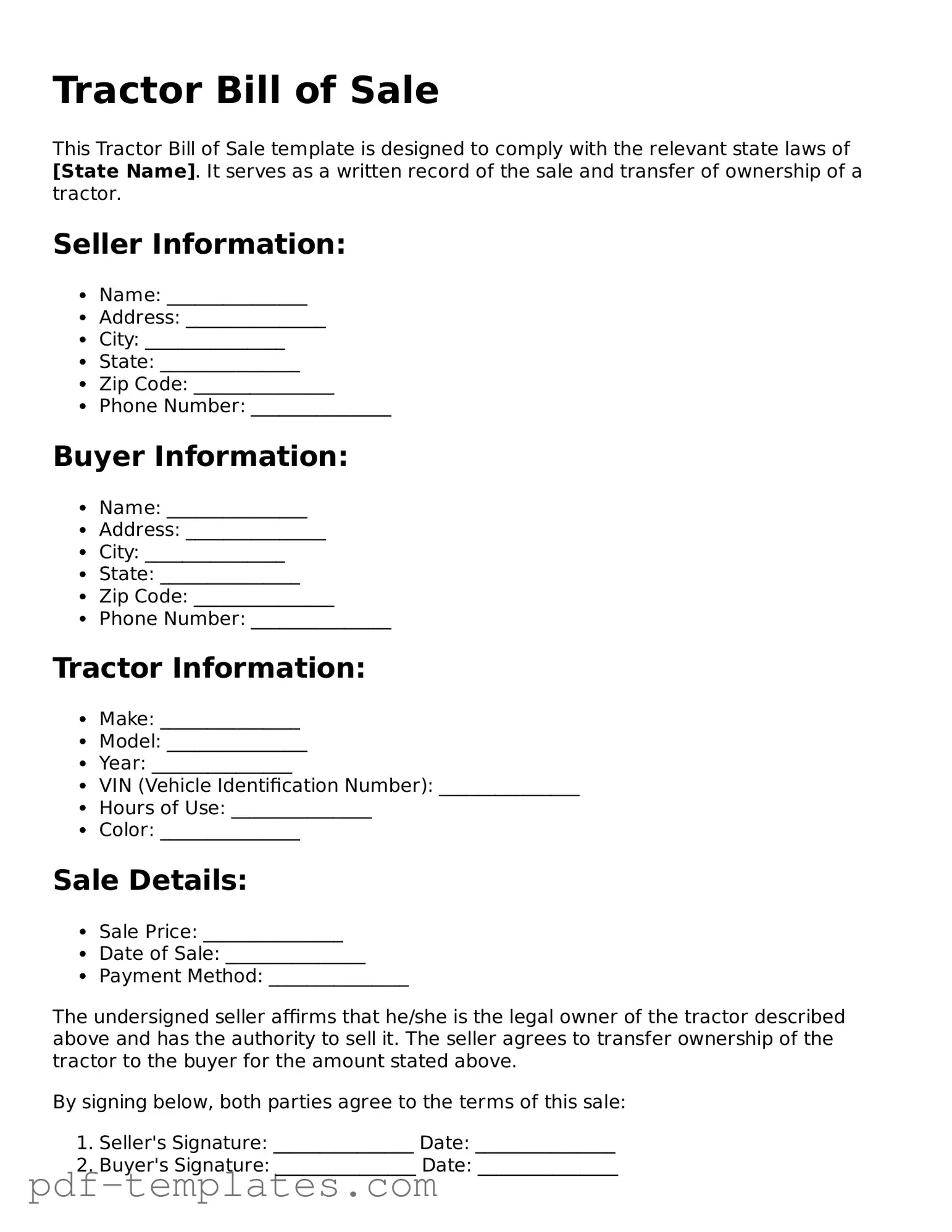Tractor Bill of Sale Document
A Tractor Bill of Sale form is a legal document that records the sale and transfer of ownership of a tractor from the seller to the buyer. This form serves as proof of the transaction and includes essential details such as the purchase price, date of sale, and identification of both parties. Completing this form is crucial for ensuring a smooth transfer of ownership and protecting the rights of both the buyer and seller.
Ready to secure your tractor transaction? Fill out the form by clicking the button below.
Customize Form Now
